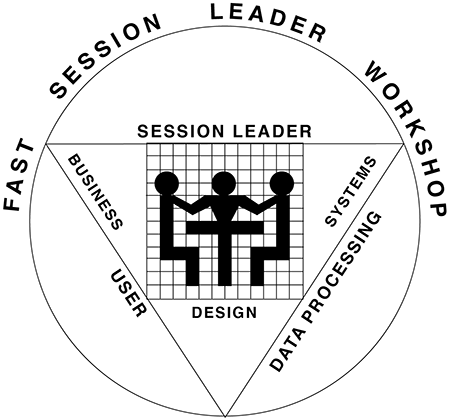October 1998

"Swift" Strategic Planning, Part 2 | Gary Rush, IAF CPF
In my July 1998 FAST Newsletter - "Swift" Strategic Planning, Part 1, I began a discussion about Swift Strategic Planning. In summary, I am a big fan of strategic planning - it is my favorite type of workshop. I have seen it used at all levels of an organization. It cannot take a long time or it fails. It must include follow-through or it becomes "shelf-ware". I laid out a process for developing plans in 4 to 8 hour increments. This often requires 6 to 10 short workshops over a period of time. These frequent, short bursts of workshops help by:
- Maintaining the energy.
- Validating the plan through implementation.
- Alleviating complaints because people aren't taken away from work for long periods.
- Beginning a process that makes the plan alive -- not static or stagnant.
In this newsletter, I detail the workshop process more and discuss some of the additional steps that help correct group problems.
The Agenda
Following is the standard workshop agenda for strategic planning:
- Introduction
- Define Your Vision
- Describe the Mission
- Identify Values
- Define Objectives
- Describe Current Situation
- Identify the Strategies
- Define Critical Success Factors
- Describe Next Steps
- Review and Wrap Up
The steps were described in the prior newsletter - "Swift" Strategic Planning, Part 1 - and some are described in more details below. Some things to think about with the agenda are:
- The order can change - and often does. Mission is often developed before the Vision. Current Situation has been developed first (although that trend is changing).
- Department or unit plans often exclude the guiding principles - they take on their parent organization's principles.
- Department or unit plans must take into consideration their parent organization's vision, mission, and objectives.
- Current Situation may be dropped for new units or departments. Current Situation is the development of SWOT analysis (Strengths, Weaknesses, Opportunities, Threats). How, why, and if to do this step is the subject of a great deal of controversy at the moment. Many feel that it is very important. Others feel that it defines the "cow path" too well and should be dropped. I feel that it should be held until later in the process (e.g., after developing objectives) and used for Gap analysis to help define strategies.
- Every strategic planning workshop that I have conducted needed to be modified for team building, creativity, or both.
General Problems You Encounter
You encounter four possible problems with strategic planning workshops. Not all workshops encounter the problems. However, I have not conducted a single strategic planning workshop in which we didn't encounter at least one of the problems, although generally more than one. The problems are:
- Team dysfunction
- inability to see the future - far enough out to call it "strategic"
- getting the group to commit to real objectives
- understanding the components of the plan and how they relate.
Team Dysfunction
If preparation identifies that dysfunction is a problem, be prepared to introduce a variety of team-building activities. One activity will not fix a history of problems. Begin with the introduction (e.g., "Peter/Pauline") and continue throughout the workshop - especially at the Vision, Guiding Principles, and Strategies steps. Be especially aware during the "Current Situation" as this is an opportunity to undo all corrective actions - with finger pointing, etc.. Do not use an extensive team-building activity unless there is a lot of dysfunction - groups will resist.
"Seeing" the Future
Creativity is especially important for the Vision and Mission. The group needs to "see" who they are and where they are going.
Enable visions either by drawing a picture of how they "see" themselves in 10 to 20 years or by writing a newspaper headline they would see at that time. Both of these can be used to develop a clear vision. Vision statements do not need to be word-smithed. Simple bullet lists suffice. Make sure that whatever they have, they feel good that it describes where they want to be in 10 to 20 years. Drive them to define their vision as far out as possible (i.e., 10 to 20 years rather than 3 to 5). The further out the vision is, the more this business is driving the industry. The closer in, the more this business is reacting to others.
Develop missions by having the group draw a picture of the elements. Use the format of a family crest or coat-of-arms to help. Alter the creativity activities throughout the workshop. Use a different one for each step - so you add variety. Remember to allow 30 to 45 minutes for each activity and always use the work immediately in the step. Use the pictures to help the group develop the words. The mission statement must be word-smithed. This may take a couple of workshops, but, work with the group to develop every word - each is important. Rereading the statement is one of the most important things to do - it helps them "hear" what they've been saying.
Real Objectives
Groups often develop meaningless objectives (e.g., "Be The Provider of Choice"). These "objectives" are useless because groups never know if they achieve them. Objectives must be "SMART" - Specific, Measurable, Relevant, and Time-based. Push the group to make their objectives SMART. An example of a SMART Objective is: "Capture 37% of the Northeastern Home Market, based on units sold, by January 1, 2003." Specifying objectives properly is context and is the responsibility of both the group and the facilitator. Whether the objectives are "good" is content and the responsibility of the group. Groups fail with poorly defined objectives because they really don't know where they are going.
Understanding the Components
This particular problem persists throughout the workshop. It persists because the people need to know what goes where. For example, groups often insist that "To add 10 more people by year-end" is an objective. It is really a strategy - it is how they achieve better service or accomplish more. Yet, it sounds like an objective. I found that posting the following picture on the wall helps. It illustrates the components and their relationship. In addition, "keep it simple" words (the words in parentheses) help.

Summary
Incorporate the ideas presented above in the appropriate steps. The remaining steps use brainstorming or simple discussion. Push hard for decisions, keep the components clear, stick with the proper format, and the group will succeed at strategic planning. ![]()

